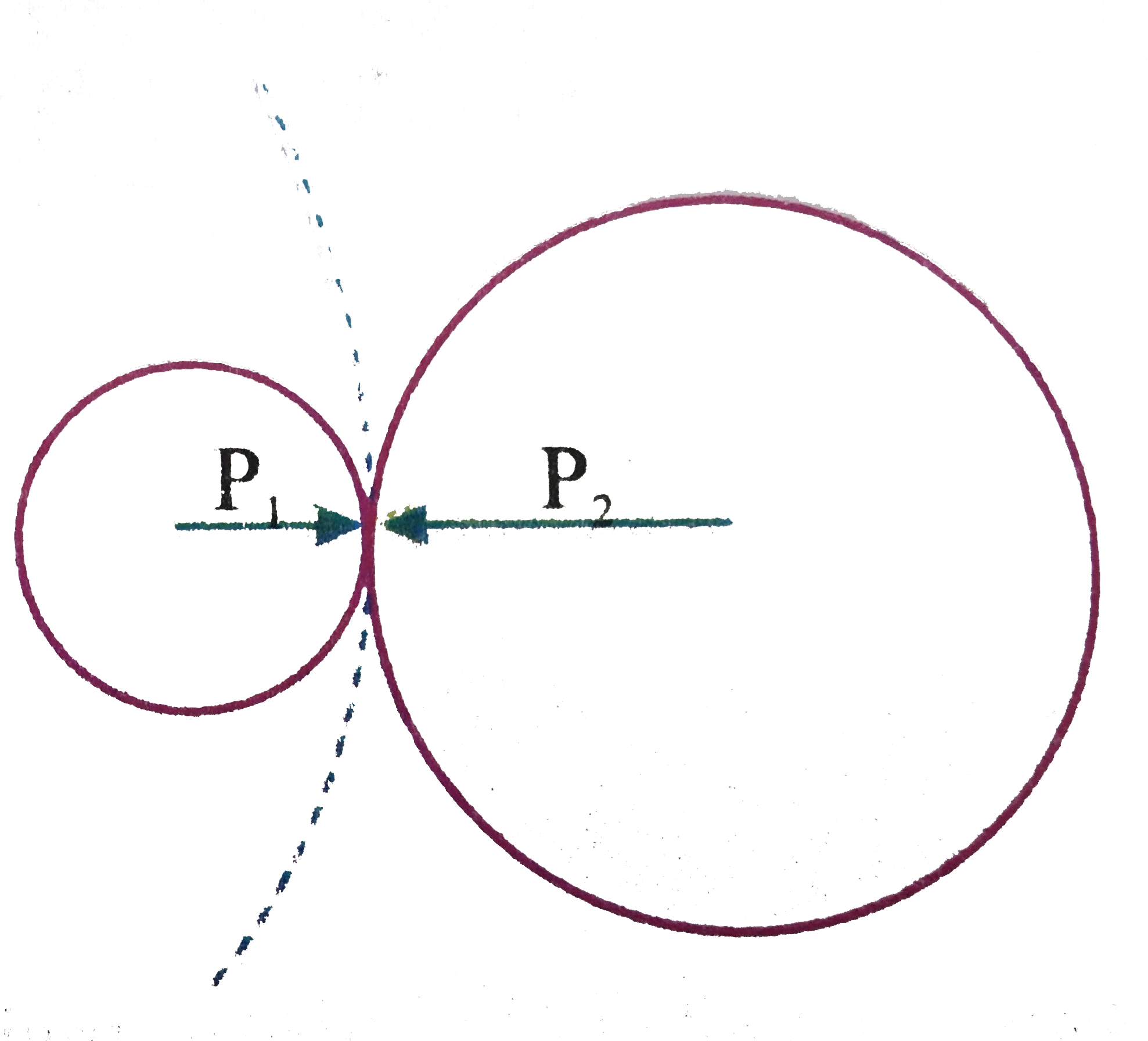Two separate air bubbles (radii 0.002cm and 0.004) formed of the same liquid (surface tension 0.07N/m) come together to form a double bubble. Find the radius and the sense of curvature of the internal film surface common to both the bubbles.

r=r1r2r2−r1
r=0.002×0.0040.004−0.002=0.004m
As the excess pr. Is always towards concave surface & pressure in smaller bubble is greater that larger bubble the common surface is concave towards the centre of the smaller bubble.
Topper's Solved these Questions
- MECHANICAL PROPERTIES OF FLUIDSBOOK - NARAYNACHAPTER - MECHANICAL PROPERTIES OF FLUIDSEXERCISE - C.U.Q
117 Videos
- MECHANICAL PROPERTIES OF FLUIDSBOOK - NARAYNACHAPTER - MECHANICAL PROPERTIES OF FLUIDSEXERCISE - Level 1 (C.W)
54 Videos
- MATHEMATICAL REVIEW & PHYSICAL WORLDBOOK - NARAYNACHAPTER - MATHEMATICAL REVIEW & PHYSICAL WORLDEXERCISE - C.U.Q
13 Videos
- MECHANICAL PROPERTIES OF SOLIDSBOOK - NARAYNACHAPTER - MECHANICAL PROPERTIES OF SOLIDSEXERCISE - LEVEL-II (H.W)
24 Videos
Similar Questions
Two separate air bubble (radii 0.002cm and 0.004) formed of the same liqid (surface tension 0.07N/m) come together to form a double bubble. Find the radius and the sence of curvature of the internal film surface common to both the bubbles.
View SolutionTwo air bubbles are formed in water (surface tension 0.72 N/m). The bubbles come together to form a bigger bubble. What will be radius and sense of curvature of common surface of that bubble? The radii of bubbles are 0.003 m and 0.005 m.
View Solution
Knowledge Check
Two seperate soap bubbles of radii 3×10−3 m and 2×10−3 m respectively, formed of same liquid (surface tension 6.5×10−2 N/m) come together to form a double bubble. The radius of interface of doubl bubble is
A6×10−3 mB4×10−3 mC1.5×10−3 mD0.66×10−3 m
Two soap bubbles of radii 2 cm and 4 cm join to form a double bubble in air, then radius of. curvature of interface is
View SolutionTwo air bubbles of radii 0.002 m and 0.004 m of same liquid come together to form a single bubble under isothermal condition. Find the radius of the buble formed. Given surface tension of liquid is 0.072Nm−1
View SolutionTwo soap bubbles of radius r1 and r2 combine. Find radius of curvature of the common surface separating them.

View SolutionWhen two soap bubbles of radii a and b (b>a) coalesce, the radius of curvature of common surface is :
View SolutionA spherical soap bubble of radius 2 cm attached to the outside of a spherical bubble of radius 4 cm. Find the radius of curvature of the common surface.
View SolutionTwo soap bubbles of radii 2 cm and 5 cm coalesce under isothermal condition in vaccum, to form a bigger bubble. Find the radius of new bubble.
View SolutionTwo identical soap bubbles each of radius r and of the same surface tension T combine to form a new soap bubble of radius R. The two bubbles contain air at the same temperature. If the atmospheric pressure is p0 then find the surface tension T of the soap solution in terms of p0, r and R. Assume process is isothermal.
View Solution
